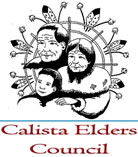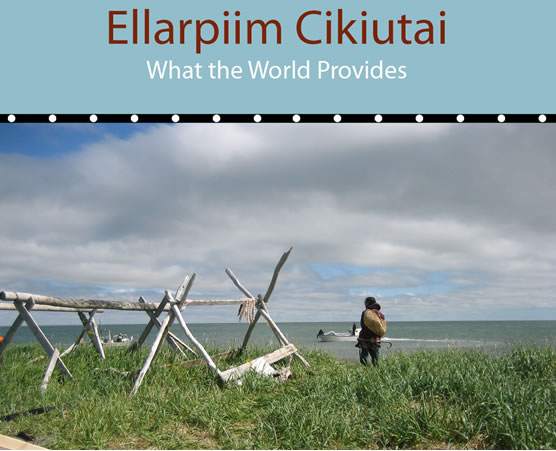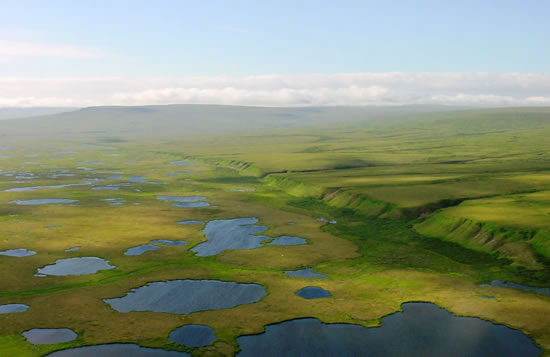|
 570 3rd Ave # 219 570 3rd Ave # 219
Bethel, AK 99559
(907) 543-1541
 625 C Street
Anchorage, AK 99501 625 C Street
Anchorage, AK 99501
(907)929-9200
anchoragemuseum.org
|
|
 |
Photo By June McAtee |
Anna Agnus at Umkumiut fish camp, Nelson Island, July 2007
|
 |
Photo: June McAtee |
The lowland delta of the Bering Sea coast.
|
 |
Ca tamalkuan aklukengnaq'lallrulliniamegteggu, caskukengnaqluku. Ca-wa tua-i pitkevkenaku kiingan una wani aqsaqum imarkaitellerkaa tua-i kiingan tua-i pingnatuutekerrlainarluku. Cat-llu nurutaarcetenritengnaqluki, cat tua-i nangengraata. Ap'eurlumeggnek iq'meng inglua imarkarcuqcaarluku.
Our ancestors tried to use everything for clothing and tools. They were constantly hunting to fill the stomach with food. Though everything was depleted, they always made sure they had enough to survive. They'd say they were always hunting food to fill the other corner of the mouth.
--Wassilie Evan, Akiak |
| The Yukon-Kuskokwim delta is rich in resources--for those who knew how to use them. Beginning in spring men and women were constantly working to harvest what the land and sea provided. Driftwood, slate, ivory, bone, fish skin, seal gut--these were just some of the materials Yup'ik people learned to use and value. |
 |
 |
Augkut wa allrakum iluani ayagniryaraat, ciuqliuluku imarpiliuryararput unani cenarmiuni, makut yuungnaqlemteni waten tungliqu'urluteng taiguralriit caliaput, iralutgun llu kiagmi yaavet uksurvianun waten tungliqutaciicetun piurquvceteng assirciqelriit. Nauwa nallunrilkeci tua i pingnaq'lalriani, pingnaqkengaput pellugaqata makut allat alaitulriit, nugtarrluta ll' tuavet tua i. Tamakut tua i aturluki piyunarqeciqut.
During the time they start to hunt again in spring, first comes ocean hunting by those of us from the coast. Those of us who subsist know that when one activity is over, others start, and we move on. It would be good if you presented these in order [through the seasons].
--Frank Andrew, Kwigillingok |
| Our story begins with preparation in the village and moves through spring, summer, fall, and early winter harvesting activities. We then return to the winter village, where activities today, as in the past, focus on sharing the harvest and on renewal for the coming year. |
 |
Photo: James Barker |
Herring braided with grass and hung to dry, Toksook Bay, 1979
|
 |
Maurluirutma aug'um pilallrukiinga neqmek qanrutaqamia, eneq-gguq taugaam kiimi neqngunrituq. Neqem-gguq qainga ilutuumarmi neqnguuq. Assiitniluku-llu neqa tauna qanresqumanritqapiarlua. Nani-gguq arenqiallugeskuma nutaan cagnilriamek tauna neqniatnilqa, assiitnilqa-llu neryugyaaqeciqaqa kaikuma.
When my grandmother talked to me about fish she'd say that the bones were the only inedible parts. She said that the body along with the innards was food. She told me never to be critical of food and say that it was bad. She said that if I was in a desperate situation and hungry, I would long for that same food I had criticized.
--Paul John, Toksook Bay |
Next
|
|

